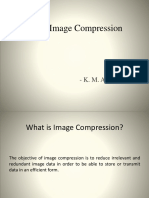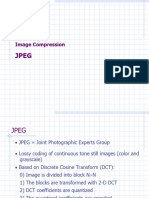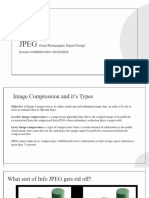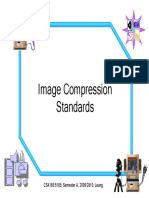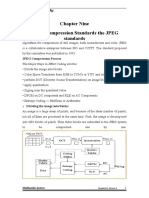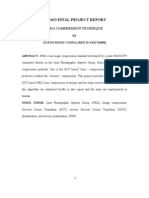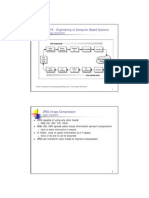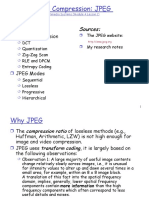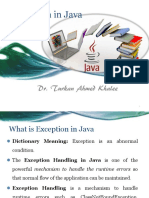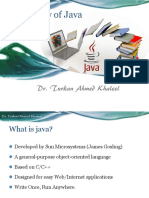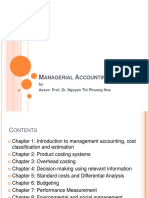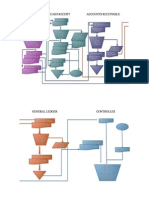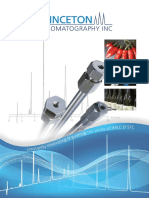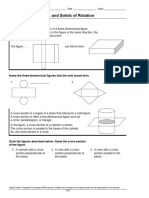0% found this document useful (0 votes)
110 views46 pagesImage Compression5
1. JPEG is an image compression standard that uses color space transformation, discrete cosine transform (DCT), quantization, and entropy coding to compress images.
2. DCT transforms the image into frequency domains and concentrates most information into a few low-frequency coefficients. Quantization then discards less important high-frequency coefficients.
3. The quantization tables assign smaller values to low-frequency DCT coefficients to preserve more visual information while discarding high-frequency coefficients where losses are less noticeable to the human eye.
Uploaded by
Duaa HusseinCopyright
© © All Rights Reserved
We take content rights seriously. If you suspect this is your content, claim it here.
Available Formats
Download as PPT, PDF, TXT or read online on Scribd
0% found this document useful (0 votes)
110 views46 pagesImage Compression5
1. JPEG is an image compression standard that uses color space transformation, discrete cosine transform (DCT), quantization, and entropy coding to compress images.
2. DCT transforms the image into frequency domains and concentrates most information into a few low-frequency coefficients. Quantization then discards less important high-frequency coefficients.
3. The quantization tables assign smaller values to low-frequency DCT coefficients to preserve more visual information while discarding high-frequency coefficients where losses are less noticeable to the human eye.
Uploaded by
Duaa HusseinCopyright
© © All Rights Reserved
We take content rights seriously. If you suspect this is your content, claim it here.
Available Formats
Download as PPT, PDF, TXT or read online on Scribd
/ 46
